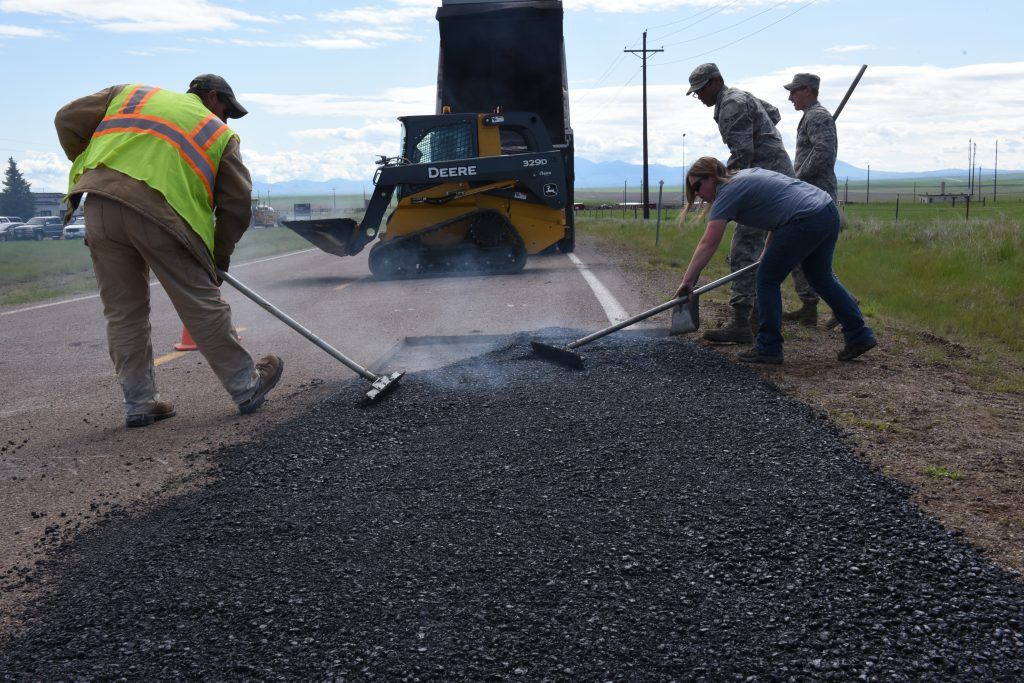Unlocking the Secrets of Warm Mix Asphalt Technology
Checking out the depths of hot mix asphalt innovation discovers a world where exact formulas and careful procedures converge to form our roadways and framework. The blend of binders, accumulations, and fillers isn't just a building and construction task however a calculated orchestration of longevity and performance. As we peer right into the complex dance of elements, a tapestry of resilience and sustainability unfolds. Yet what lies beneath this surface of asphaltic mastery, and what keys wait to be unveiled in the realm of leading innovations?
Significance of Warm Mix Asphalt
Hot Mix Asphalt plays a vital role in modern infrastructure development due to its longevity and cost-effectiveness. As the most generally made use of leading material for roads, highways, and parking lots, Hot Mix Asphalt uses a variety of benefits that contribute to its relevance in building tasks.
The durability of Warm Mix Asphalt stems from its structure, which includes accumulations, binder, and filler materials that are carefully picked and blended to satisfy specific efficiency demands. In general, the relevance of Warm Mix Asphalt in infrastructure growth can not be downplayed, as it continues to be a keystone of modern-day building and construction practices.
Elements of Asphalt Mixes
The composition of asphalt blends consists of carefully chosen accumulations, binder, and filler materials that are essential for attaining certain performance needs. Aggregates are the main component of asphalt mixes, giving stamina and security. These aggregates can be natural, such as crushed rock or crushed rock, or synthetic, like recycled products from old sidewalks. The binder, usually asphalt or asphalt cement, holds the aggregates with each other and offers adaptability and resilience to the mix. The option of the binder is important as it directly affects the mix's efficiency in various weather. Fillers, such as hydrated lime or Rose city cement, are used to enhance the mix's workability and aging resistance. Angled Parking.
The mix and proportion of these elements play a substantial duty in determining the quality and performance of the asphalt mix. Designers carefully design the mix to meet specific needs, considering factors like traffic volume, environment problems, and sidewalk life expectancy. Appropriate choice and balancing of aggregates, binder, and fillers are important for creating resilient, long-lasting asphalt pavements.
Combining and Manufacturing Methods

Once the aggregates are selected, the binder, typically asphalt concrete, is included in bind the products together. The binder's quality and quantity considerably affect the mix's resistance, versatility, and stamina to environmental elements. Furthermore, fillers like hydrated lime or Portland cement might be included to enhance details characteristics of the asphalt mix, such as its workability or moisture resistance.
Throughout manufacturing, the accumulations and binder are heated up, usually between 250-325 ° F(121-163 ° C ), to help with mixing and ensure appropriate finish of the accumulations. The mixing procedure has to be detailed to accomplish a homogeneous mixture that advertises the preferred performance qualities of the asphalt. Various techniques, such as you can look here set mixing or drum mixing, are used to accomplish high-grade and constant asphalt mixes for building and construction our website tasks.
Aspects Impacting Asphalt Performance
Aspects affecting asphalt efficiency encompass a range of variables that influence the sturdiness, long life, and overall high quality of asphalt sidewalks. One essential variable is the quality of materials made use of in the asphalt mix.

Environmental problems likewise affect asphalt performance. Temperature level variations, dampness infiltration, and traffic tons can all impact the structural honesty of the pavement. Layout considerations, such as pavement density and drainage, are crucial in guaranteeing the lasting performance of the asphalt pavement. By thoroughly thinking about these elements, service providers and engineers can maximize asphalt performance and enhance the life span of sidewalks.
Lasting Practices in Asphalt Modern Technology

Furthermore, the advancement of warm-mix asphalt (WMA) technologies has gained traction over the last few years. WMA permits for the manufacturing and positioning of asphalt mixes at lower temperature levels contrasted to conventional hot-mix asphalt, resulting in reduced power intake and greenhouse gas exhausts. The usage of porous asphalt blends can assist reduce stormwater drainage problems by allowing water to penetrate with the sidewalk and into the ground, advertising natural water filtration and reenergize processes. By applying these sustainable techniques, the asphalt industry can add to developing a more resilient and eco friendly facilities network.
Verdict
Finally, warm mix asphalt modern technology plays a crucial role in contemporary facilities growth as a result of its resilience and cost-effectiveness. By very carefully stabilizing elements, using correct blending strategies, and taking into consideration numerous variables, designers can develop high-quality asphalt mixes that withstand heavy web traffic tons and severe weather condition conditions. Accepting sustainable practices, such as using warm-mix modern technologies and recycled products, additionally improves the environmental friendliness of asphalt modern technology.
Blending and production techniques in hot mix asphalt modern technology entail the exact combination and processing of accumulations, binder, and fillers to produce a high-performance and resilient asphalt mix.Factors affecting asphalt performance encompass an array of variables that affect the sturdiness, longevity, and total top quality of asphalt pavements. Lasting methods in asphalt technology incorporate different initiatives intended at minimizing the environmental influence of asphalt production and paving procedures. By integrating reclaimed asphalt sidewalk (RAP) and recycled asphalt roof shingles (RAS) right into brand-new asphalt blends, the market can considerably minimize the consumption of raw products and energy, while additionally reducing landfill waste.
WMA enables for the production and positioning of asphalt mixes at lower temperature levels compared to typical hot-mix asphalt, resulting in decreased power consumption and greenhouse gas exhausts.